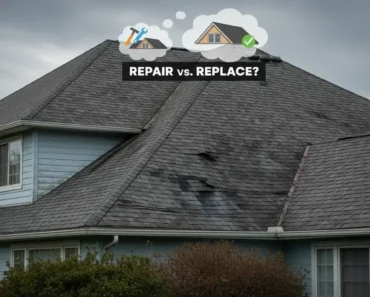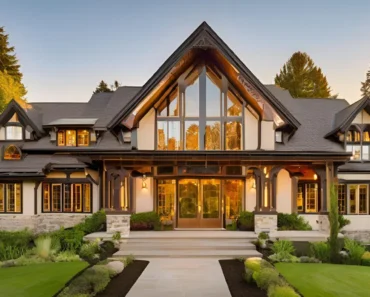Your comprehensive guide to illuminating workspaces with energy-efficient LED solutions
Garage lights serve as the foundation for safe, productive workspace environments that extend far beyond simple vehicle storage. The right lighting system transforms dark, shadowy garages into well-illuminated areas perfect for automotive maintenance, woodworking projects, and general storage organization.
Modern LED technology has revolutionized garage lighting solutions, offering energy-efficient alternatives that provide superior brightness while reducing operational costs. This comprehensive guide explores the essential factors, technical specifications, and practical considerations that help you select optimal garage lighting for your specific needs and workspace requirements.
Understanding Garage Light Requirements and Specifications
Selecting appropriate garage lights requires understanding fundamental lighting metrics and how they apply to different workspace configurations. Lumens measure total light output, while foot-candles indicate light intensity over specific areas, creating the foundation for effective lighting design.
Essential Lighting Calculations
Garages typically require 80-100 foot-candles for general activities, with task lighting reaching 300 lumens per square foot for detailed work areas. These specifications ensure adequate visibility for routine maintenance tasks while providing enhanced illumination for precision work requiring clear visual acuity.
Standard Garage Size Requirements
A one-car garage needs a minimum of 13,200 lumens, while a two-car garage requires at least 20,000 lumens for basic functionality. These baseline requirements increase when incorporating workshop areas or specialized storage systems that demand higher visibility levels.
Lumens Calculation Formula:
- Measure garage length and width in feet
- Multiply dimensions for total square footage
- Multiply square footage by 50 lumens for ambient lighting
- Add 300 lumens per square foot for work areas
- Consider ceiling height adjustments for optimal distribution
Color Temperature Considerations
Cool white (4000-5000K) works best for task-oriented areas like workshops, while daylight (5000-6500K) provides brighter, more vibrant illumination. The color temperature directly impacts visual comfort and task performance, making this specification crucial for workspace optimization.
Daylight temperatures enhance color accuracy when working with paints, stains, or other materials requiring precise color matching. Cool white temperatures reduce eye strain during extended work periods while maintaining excellent visibility for mechanical tasks and general maintenance activities.
LED Technology Advantages for Garage Applications
LED lights work best in garages because they save energy, last long, and shine bright. The technology offers significant operational advantages compared to traditional fluorescent or incandescent systems, particularly in garage environments that experience temperature fluctuations and intermittent usage patterns.
Energy Efficiency Benefits
LED garage lights consume 75-80% less energy than comparable incandescent fixtures while producing equivalent or superior light output. This efficiency translates to substantial cost savings over the fixture’s operational lifespan, particularly important for garages requiring extended lighting periods.
Lifespan and Durability
Modern LED garage lights offer lifespans up to 27.4 years based on 3 hours of daily use with zero maintenance requirements. This exceptional durability reduces replacement costs and eliminates the inconvenience of frequent bulb changes in hard-to-reach ceiling installations.
Performance in Cold Conditions
LED technology excels in unheated garages where traditional fluorescent lights struggle with cold-weather performance. LEDs reach full brightness instantly, regardless of ambient temperature, providing immediate illumination when entering cold garage spaces during winter months.
LED Advantages Summary:
- Instant full brightness in any temperature
- 75-80% energy reduction versus incandescent
- 25,000-50,000 hour operational lifespan
- No mercury or hazardous materials
- Minimal heat generation reduces cooling costs
- Excellent vibration resistance for workshop environments
Heat Management Benefits
LED fixtures generate minimal heat compared to traditional lighting systems, reducing energy waste and improving garage comfort during summer months. This characteristic proves particularly valuable in workshops where additional heat sources from tools and equipment already elevate ambient temperatures.
Garage Light Fixture Types and Installation Considerations
Garage lighting solutions encompass various fixture styles designed for different ceiling heights, mounting systems, and specific application requirements. Understanding these options ensures optimal light distribution while accommodating structural limitations and aesthetic preferences.
Shop Light Fixtures
Traditional shop lights represent the most common garage lighting solution, featuring linear designs that provide broad area coverage. These fixtures typically measure 2-8 feet in length, allowing flexible configurations that accommodate different garage layouts and coverage requirements.
Chain Mount vs. Flush Mount Options
Chain-mounted shop lights offer adjustable height positioning, essential for optimizing light distribution in garages with varying ceiling heights. Flush-mount alternatives provide cleaner appearances while maximizing clearance in low-ceiling applications where hanging fixtures might interfere with garage door operations.
High Bay and Low Bay Solutions
For parking garages with ceilings under 15 feet, low bay LED lights distribute light evenly across the space, while high bay lights work better for larger garages with higher ceilings, delivering broad, even illumination. These industrial-grade fixtures provide superior performance for demanding workshop environments.
UFO vs. Linear High Bay Designs
UFO-style round fixtures concentrate light in circular patterns, ideal for workbenches and centralized task areas. Linear high bay fixtures distribute light across rectangular patterns, better suited for multi-bay garages requiring uniform coverage across extended areas.
Installation Planning Considerations:
- Measure ceiling height and garage door clearance requirements
- Identify electrical circuit capacity and switch locations
- Plan fixture spacing for uniform light distribution
- Consider future workspace expansion or reconfiguration needs
- Account for natural light sources and window placement
- Evaluate mounting surface strength for heavy fixtures
Motion Sensor Integration
Motion-activated garage lights provide convenience and energy savings by automatically illuminating spaces when occupied. These systems prove particularly valuable for entry lighting and security applications, ensuring safe navigation while minimizing unnecessary energy consumption during unoccupied periods.
Sensor Placement Strategies
Optimal sensor placement considers traffic patterns, detection zones, and false trigger prevention. Position sensors to detect entry from all access points while avoiding activation from external movement or small animals that might trigger unnecessary operation.
Strategic Task Lighting and Zone-Based Design Approaches
Effective garage lighting design incorporates multiple lighting zones that address different functional requirements within the same space. This layered approach ensures adequate general illumination while providing enhanced lighting for specific work areas and detailed tasks.
Workbench Lighting Solutions
Workbench areas require significantly higher illumination levels than general garage spaces, often necessitating dedicated task lighting systems. Under-cabinet LED strips, adjustable arm lamps, and focused spotlights provide concentrated illumination that eliminates shadows and improves precision work visibility.
Shadow Elimination Techniques
Multiple light sources positioned at different angles prevent shadows that interfere with detailed work. Cross-lighting from opposite sides of work areas ensures consistent illumination regardless of body position or tool placement during project execution.
Vehicle Service Areas
Automotive maintenance requires specialized lighting that illuminates engine compartments, undercarriage areas, and interior spaces. Portable work lights, magnetic base fixtures, and extendable arm systems provide flexible positioning for accessing confined spaces and unusual angles.
Zone-Based Lighting Strategy:
- General Area: 50 lumens per square foot for navigation and basic tasks
- Work Zones: 300 lumens per square foot for detailed projects
- Storage Areas: 30 lumens per square foot for identification and access
- Vehicle Bays: 100 lumens per square foot for maintenance activities
- Entry Points: 150 lumens per square foot for safety and security
Adjustable and Directional Lighting
Adjustable fixtures with moveable heads direct light where it’s most needed, while dimmable lights allow brightness adjustment based on activity and preference. This flexibility accommodates varying task requirements and personal comfort preferences throughout different work sessions.
Track Lighting Systems
Track-mounted fixtures provide ultimate flexibility for garage workshops, allowing light repositioning as workspace configurations change. These systems support multiple fixture types along single tracks, enabling customized lighting solutions that adapt to evolving project requirements.
Safety Standards and Electrical Code Compliance for Garage Lighting
Garage lighting installations must comply with local electrical codes and safety standards that address moisture protection, circuit capacity, and proper grounding requirements. Understanding these regulations ensures safe installations that meet inspection requirements and insurance compliance standards.
Electrical Circuit Planning
Garage lighting circuits should be dedicated systems separate from outlet circuits to prevent overloading and ensure reliable operation. Most residential applications require 15-amp or 20-amp circuits capable of supporting multiple fixtures while maintaining adequate capacity for future additions.
GFCI Protection Requirements
Many jurisdictions require GFCI protection for garage lighting circuits, particularly in areas where moisture exposure is possible. These safety devices prevent electrical shock hazards by immediately shutting off power when ground faults are detected, protecting both equipment and personnel.
Fixture Rating and Environmental Protection
Garage environments expose lighting fixtures to temperature fluctuations, humidity, dust, and potential impact damage. Select fixtures with appropriate IP (Ingress Protection) ratings that provide adequate sealing against environmental factors while maintaining long-term reliability.
Critical Safety Considerations:
- Ensure proper fixture mounting to prevent falling hazards
- Maintain adequate clearance from garage door operations
- Use explosion-proof fixtures near fuel storage or chemicals
- Install emergency lighting for power outage situations
- Verify switch accessibility from all entry points
- Consider battery backup systems for critical work areas
Professional Installation vs. DIY Considerations
Complex lighting installations involving new circuits, high-voltage systems, or structural modifications typically require professional electrical contractors. Simple fixture replacements on existing circuits often qualify as DIY projects, though local permit requirements vary by jurisdiction and installation complexity.
Permit and Inspection Requirements
Major electrical work generally requires permits and inspections to ensure code compliance and safety standards. Contact local building departments before beginning installations to understand specific requirements and avoid costly corrections or insurance complications.
Cost Analysis and Return on Investment for LED Garage Lighting
LED garage lighting installations require higher initial investments compared to traditional systems but deliver substantial long-term savings through reduced energy consumption and maintenance costs. Understanding these financial implications helps justify upgrade decisions and optimize system selections.
Initial Investment Considerations
Quality LED garage lighting systems typically cost $100-400 for basic installations, with high-performance workshop systems reaching $800-1,500 depending on coverage area and fixture quality. These costs include fixtures, installation materials, and basic electrical work but may exclude major circuit modifications or professional installation fees.
Energy Savings Calculations
LED systems consume 75-80% less electricity than incandescent equivalents, creating immediate operational savings. A typical two-car garage conversion saves $150-300 annually on electricity costs, with payback periods ranging from 2-4 years depending on usage patterns and local utility rates.
Maintenance Cost Reductions
LED fixtures eliminate frequent bulb replacements that characterize traditional systems, reducing both material costs and labor time. Over 10-year periods, maintenance savings often equal or exceed initial purchase price premiums, particularly in hard-to-reach installations requiring professional service.
10-Year Total Cost Comparison (Two-Car Garage):
- LED System: $300 initial + $200 electricity = $500 total
- Fluorescent System: $150 initial + $800 electricity + $200 maintenance = $1,150 total
- Incandescent System: $75 initial + $1,500 electricity + $300 maintenance = $1,875 total
- LED Savings: $650-1,375 over 10 years
Property Value Enhancement
Well-designed garage lighting systems increase property values by improving functionality and showcasing spaces effectively. Professional-quality lighting demonstrates attention to detail that appeals to potential buyers, particularly those valuing workshop capabilities or organized storage systems.
Insurance and Safety Benefits
Improved lighting reduces accident risks and security vulnerabilities, potentially lowering insurance premiums while preventing costly incident claims. Many insurance providers offer discounts for enhanced safety features, including adequate lighting systems that prevent slips, falls, and break-ins.
Advanced Features and Smart Home Integration Options
Modern garage lighting systems incorporate intelligent controls, connectivity options, and automated features that enhance convenience while optimizing energy efficiency. These advanced capabilities transform traditional lighting into responsive systems that adapt to usage patterns and user preferences.
Smart Control Systems
WiFi-enabled garage lights integrate with smartphone apps, voice assistants, and home automation platforms for remote control and scheduling capabilities. These systems allow lighting adjustment from inside homes, automatic operation based on garage door status, and energy monitoring for usage optimization.
Voice Assistant Compatibility
Alexa, Google Assistant, and Siri integration enables hands-free lighting control, particularly valuable when entering garages with full hands or during messy workshop projects. Voice commands can adjust brightness, change colors, or activate specific lighting zones without requiring physical switch access.
Automated Scheduling and Sensors
Advanced motion sensors distinguish between vehicles and pedestrians, triggering appropriate lighting responses for different entry scenarios. Daylight sensors prevent unnecessary operation during bright conditions, while programmable schedules ensure security lighting during vacation periods or extended absences.
Smart Feature Benefits:
- Remote monitoring and control capabilities
- Energy usage tracking and optimization
- Integration with security systems
- Customizable scene presets for different activities
- Automatic updates and feature additions
- Multi-user access and control sharing
Color-Changing Capabilities
RGB+White LED systems provide variable color options that serve both functional and aesthetic purposes. Cool white for detailed work, warm white for relaxed activities, and colored lighting for special occasions or mood enhancement expand the versatility of garage spaces beyond purely utilitarian applications.
Circadian Rhythm Support
Tunable white systems adjust color temperature throughout the day, supporting natural circadian rhythms during extended workshop sessions. Cooler temperatures during morning hours promote alertness, while warmer tones during evening work reduce eye strain and support better sleep patterns.
Key Takeaways:
- ✓
LED garage lights provide 75-80% energy savings with 25,000+ hour lifespans - ✓
Zone-based lighting design optimizes illumination for different garage activities - ✓
Proper lumens calculation ensures adequate visibility: 50 for ambient, 300 for task lighting - ✓
Smart controls and motion sensors enhance convenience while reducing energy waste - ✓
Professional installation may be required for major electrical work and code compliance
Frequently Asked Questions
Can I install LED garage lights myself, or do I need a professional electrician?
Simple LED fixture replacements on existing circuits with standard electrical boxes typically qualify as DIY projects for homeowners with basic electrical knowledge. However, installations requiring new circuits, junction boxes, or modifications to electrical panels should involve licensed electricians to ensure code compliance and safety. Consider professional installation for high-bay fixtures, complex wiring runs, or when local permits are required. DIY installations must use proper wire nuts, ensure secure mounting, and verify circuit capacity before adding fixtures. When in doubt, consult with an electrician – the cost of professional installation often proves worthwhile for complex projects or when dealing with older electrical systems.
How do motion sensor garage lights work, and what are the best placement strategies?
Motion sensor garage lights use passive infrared (PIR) technology to detect heat signatures from moving objects, automatically activating when motion is detected within the sensor range. Place sensors to cover main traffic patterns including vehicle entry, pedestrian doors, and work areas while avoiding false triggers from small animals or external movement. Install sensors 8-12 feet high with detection angles covering entry points from multiple directions. Adjust sensitivity settings to prevent activation from minor movements while ensuring reliable operation for intended users. Consider dual-technology sensors that combine PIR with microwave detection for improved accuracy in challenging environments with temperature variations or air movement.
What maintenance do LED garage lights require to ensure long-term performance?
LED garage lights require minimal maintenance compared to traditional lighting systems, but periodic cleaning and inspection ensure optimal performance throughout their lifespan. Clean fixture lenses quarterly using mild soap and water to remove dust, dirt, and debris that can reduce light output by up to 30%. Inspect mounting hardware annually for loose connections or corrosion, particularly in humid environments. Check motion sensor functionality and clean sensor lenses to maintain proper detection ranges. Verify that junction boxes remain secure and electrical connections stay tight. Most quality LED fixtures require no bulb replacements for 15-25 years under normal usage, making them nearly maintenance-free compared to fluorescent or incandescent alternatives that require frequent attention.
Final Thoughts
Selecting the best garage lights transforms workspaces from dark, inefficient areas into well-illuminated environments that support productivity, safety, and enjoyment. LED technology provides the optimal combination of energy efficiency, longevity, and performance that makes modern garage lighting both practical and cost-effective. Consider your specific needs, workspace layout, and future expansion plans when designing your lighting system. Whether you choose simple fixture replacements or comprehensive smart lighting solutions, proper planning and quality components ensure years of reliable service. According to Energy.gov lighting guidelines, LED systems can reduce lighting energy consumption by up to 75% while providing superior illumination quality. Start with your most critical lighting needs and expand the system over time as requirements evolve. The Home Depot lighting guide offers additional technical specifications and installation resources for various fixture types. Your investment in quality garage lighting pays dividends through improved functionality, enhanced safety, and reduced long-term operating costs that benefit both daily operations and property value.


